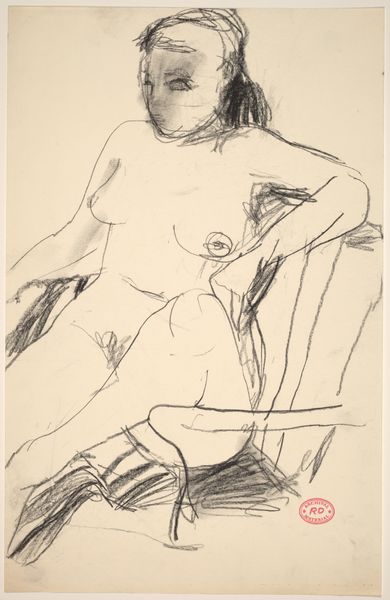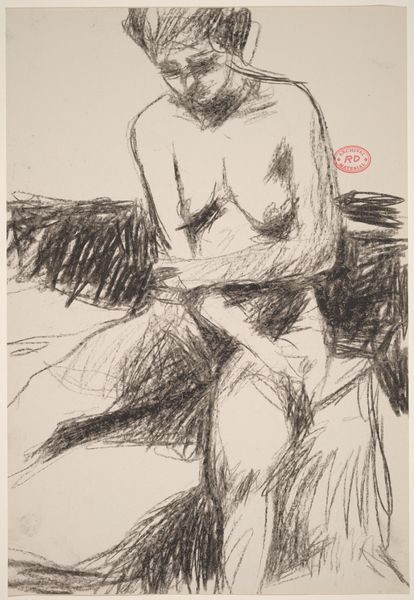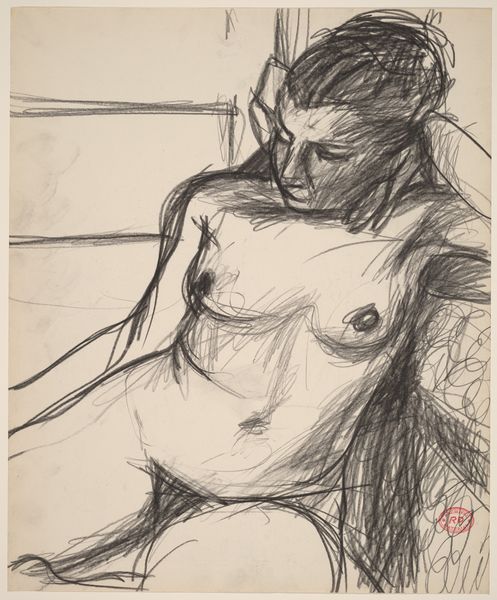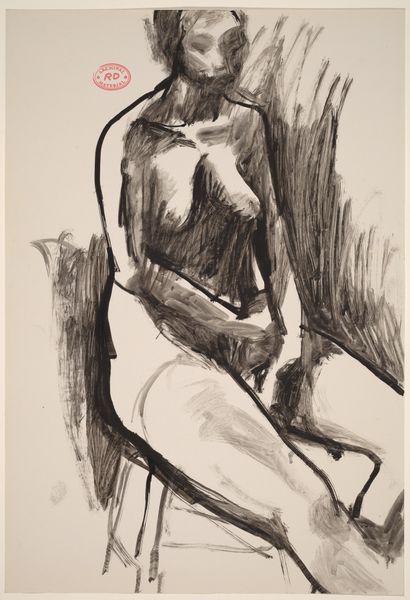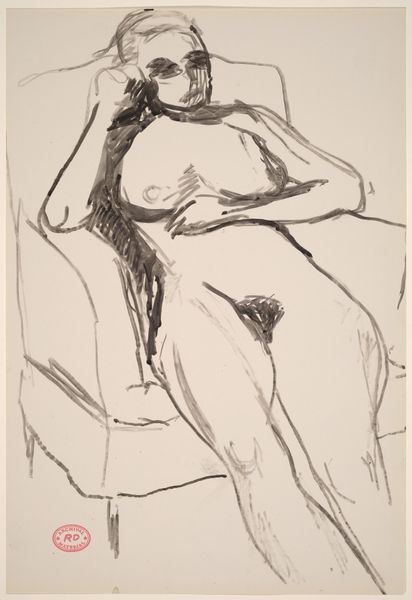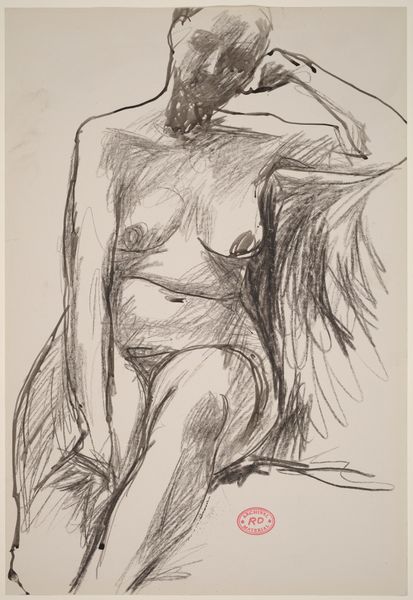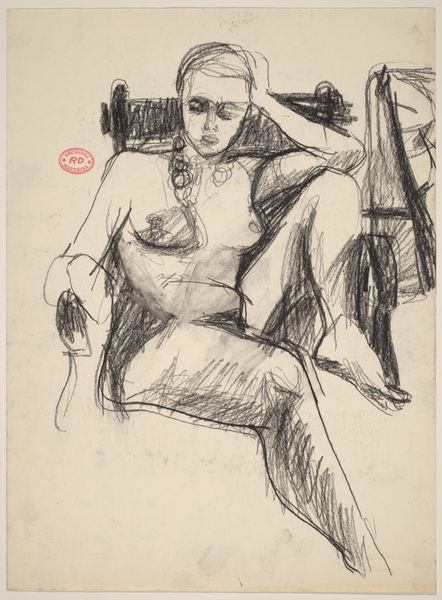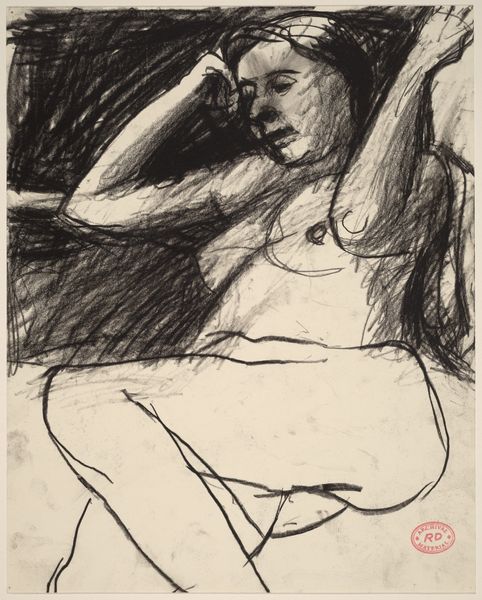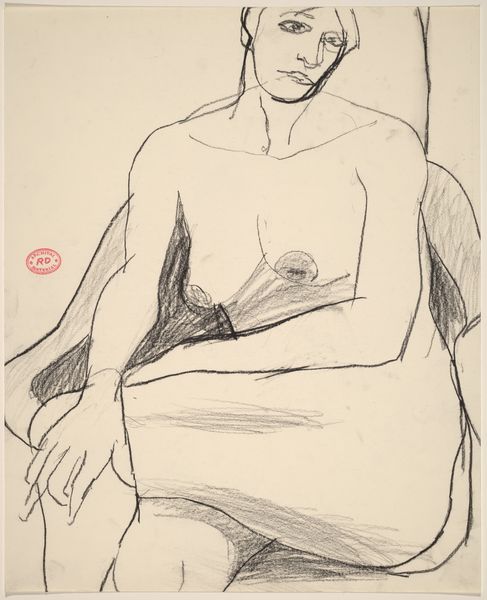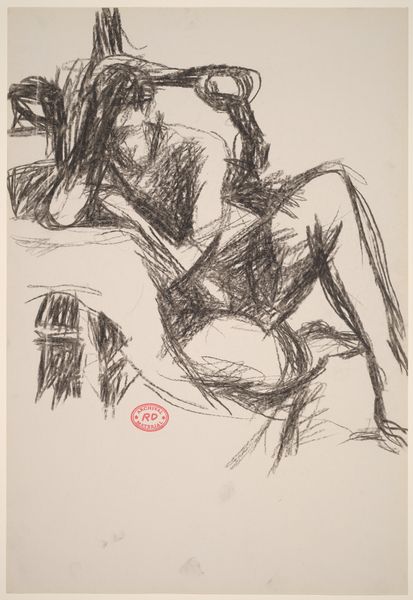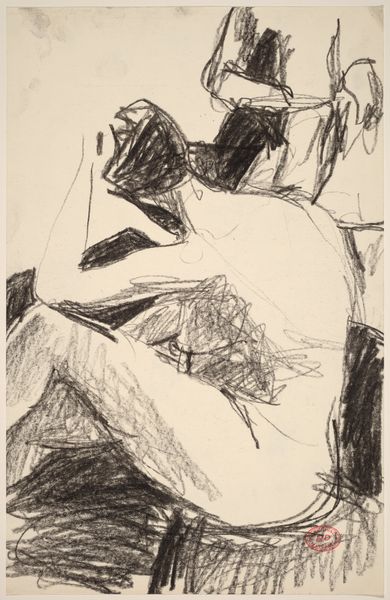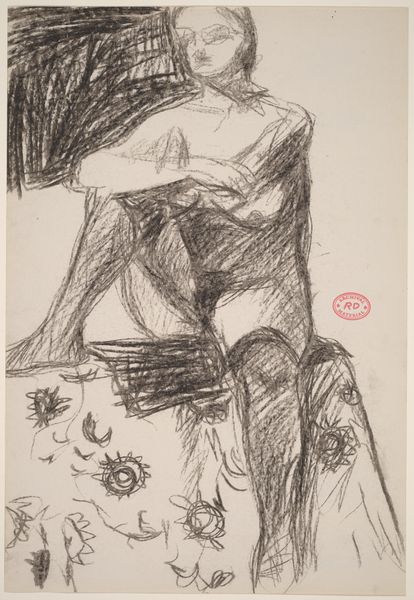![Untitled [seated nude leaning back with hands behind her head] by Richard Diebenkorn](/_next/image?url=https%3A%2F%2Fd2w8kbdekdi1gv.cloudfront.net%2FeyJidWNrZXQiOiAiYXJ0ZXJhLWltYWdlcy1idWNrZXQiLCAia2V5IjogImFydHdvcmtzLzJiNTVhMGRiLThiZGQtNDBkNi04MDc2LTY4ZWU4OTkyYTVkZi8yYjU1YTBkYi04YmRkLTQwZDYtODA3Ni02OGVlODk5MmE1ZGZfZnVsbC5qcGciLCAiZWRpdHMiOiB7InJlc2l6ZSI6IHsid2lkdGgiOiAxOTIwLCAiaGVpZ2h0IjogMTkyMCwgImZpdCI6ICJpbnNpZGUifX19&w=3840&q=75)
Untitled [seated nude leaning back with hands behind her head] 1955 - 1967
0:00
0:00
drawing, impasto, charcoal
#
drawing
#
ink drawing
#
pen sketch
#
figuration
#
impasto
#
bay-area-figurative-movement
#
charcoal
#
nude
#
modernism
Dimensions: overall: 43.2 x 27.9 cm (17 x 11 in.)
Copyright: National Gallery of Art: CC0 1.0
Editor: Richard Diebenkorn's "Untitled [seated nude leaning back with hands behind her head]," made sometime between 1955 and 1967, is a really striking drawing in charcoal and what looks like ink. I’m immediately drawn to how vulnerable yet self-assured the figure seems. How do you interpret this work, especially in terms of its symbolism? Curator: It's interesting you say "vulnerable and self-assured" because I think that reflects a key tension Diebenkorn explores. Nudes have long been powerful symbols of both idealised beauty *and* subjugation. Consider how the pose—reclined, hands behind the head—mirrors classical odalisques, but here there’s a lack of opulent setting, a rawness. Do you sense any departure from that classical symbolism? Editor: Definitely. The raw, almost harsh lines contrast with the smoother forms you see in classical nudes, and the lack of detail in the face makes her feel less like an individual and more like…an idea? Curator: Exactly! Perhaps an idea of modern femininity. Think about what was happening culturally then – shifting social roles, changing expectations. The bold lines, the deliberate lack of finish… It suggests a woman comfortable in her own skin, challenging the passive, decorative role often assigned to women in art. Can you see other possible interpretations through the mark-making? Editor: The dark shading on the left…it's almost aggressive. Like she’s pushing back against something, some kind of constraint. The symbolism is subtle, but very present. Curator: It’s the interplay between the subject's posture and the artist’s choices in the visual vocabulary of lines and shading that communicates the complexities of this work and gives clues to the values of its period. Understanding art like this really makes you look at cultural expectations and power structures in different ways. Editor: Absolutely. I came in thinking about aesthetic appeal, but now I see it’s more about the social and psychological weight this image carries, and how Diebenkorn played with our expectations. Curator: And how it resonates differently across time as we carry the images and values of prior periods into the present!
Comments
No comments
Be the first to comment and join the conversation on the ultimate creative platform.
